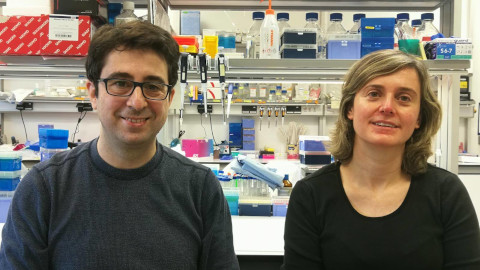How is long-term memory created and consolidated?

An international study published in Nature, which included the involvement of researchers from the UAB Department of Cell Biology, Physiology and Immunology and the UAB Institut de Neurociències (INc-UAB), describes the processes occurring in the hippocampal neurons that are in charge of creating long-lasting memories.
Long-term memory is a brain mechanism that allows us to encode and retain an almost unlimited amount of information throughout our lifetime. Key proteins that activate protein synthesis, such as the α subunit of the eIF2 initiation factor (eIF2α), are involved in the process.
In this study, published in the journal Nature and made in mice, researchers identified those neural circuits and connections by which, in both health and disease conditions, eIF2α impairs learning and memory when bound to a phosphorus molecule (phosphorylated), but enhances them in their non-phosphorylated form.
The research team, in which Albert Quintana and Elisenda Sanz of the INc-UAB participated under the coordination of McGill University (Montreal, Canada), showed that eIF2α is involved in the formation of new long duration memories through its activity in two types of neurons in the hippocampus: excitatory neurons and neurons expressing somatostatin, a group of inhibitory neurons.
In parallel and autonomously, the reduction of eIF2α phosphorylation in these two subpopulations is enough to increase protein synthesis, strengthen connections between neurons, and improve long-term memory.
"To study these effects, we used a technique we had developed, that showed that the changes in the excitatory neurons during learning are similar to those observed by genetically preventing eIF2α phosphorylation in these neurons", explains Elisenda Sanz. This is important because it validated the genetic model and allowed identifying the changes that learning produces at a transcriptional level.
"The existence of two autonomous processes for memory consolidation mediated by the non-phosphorylated form of eIF2α may respond to an evolutionary advantage in ensuring and regulating the duration of a given memory", says Albert Quintana.
The study is the first to analyze separately the role of excitatory and inhibitory neurons in the hippocampus in the consolidation of these types of memories, and helps to understand the creation and maintenance of memories phenomenon, which continues to belargely unknown.
Original article: Sharma, V., Sood, R., Khlaifia, A. et al. "eIF2α controls memory consolidation via excitatory and somatostatin neurons". Nature (2020). https://doi.org/10.1038/s41586-020-2805-8






